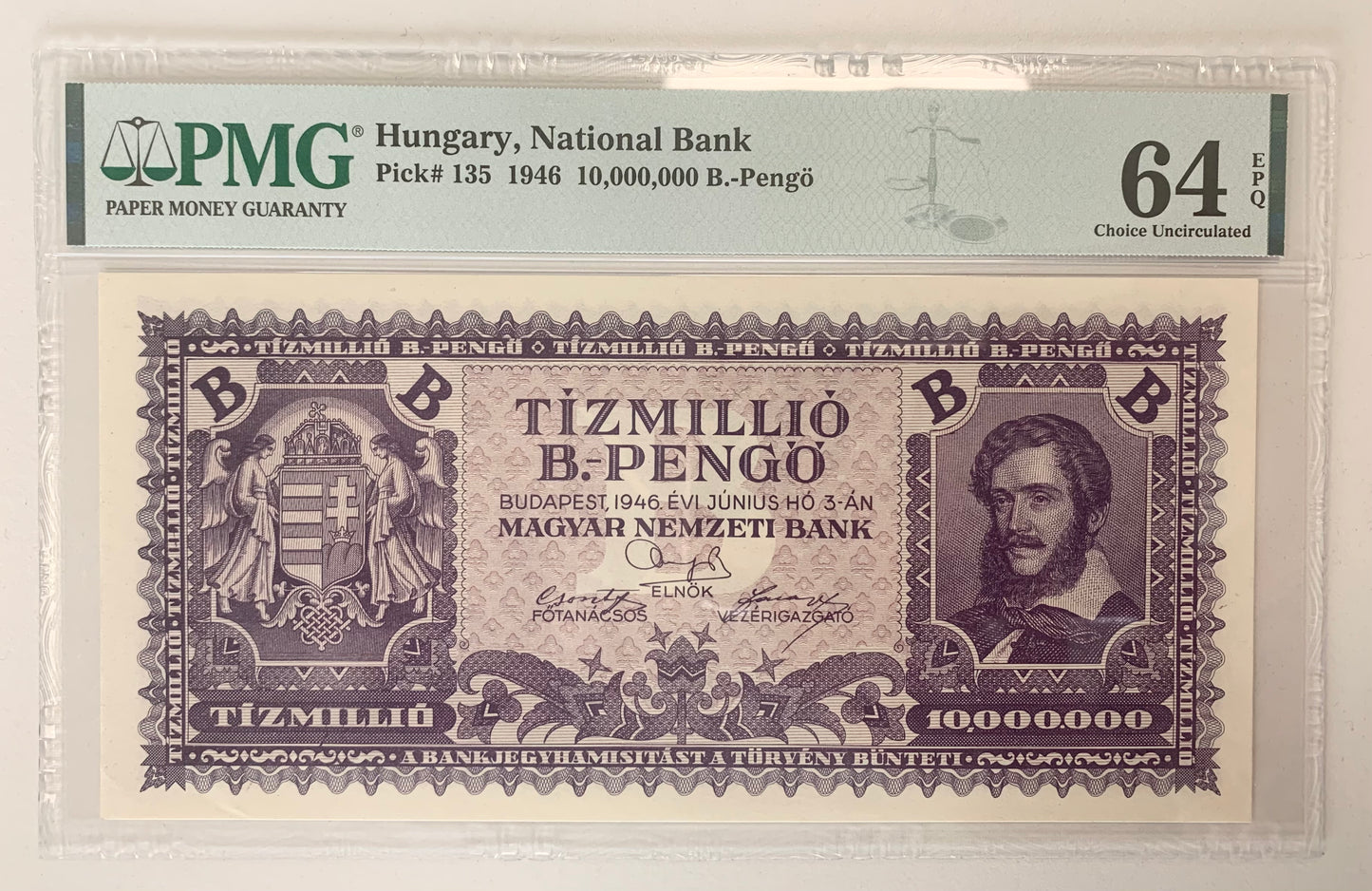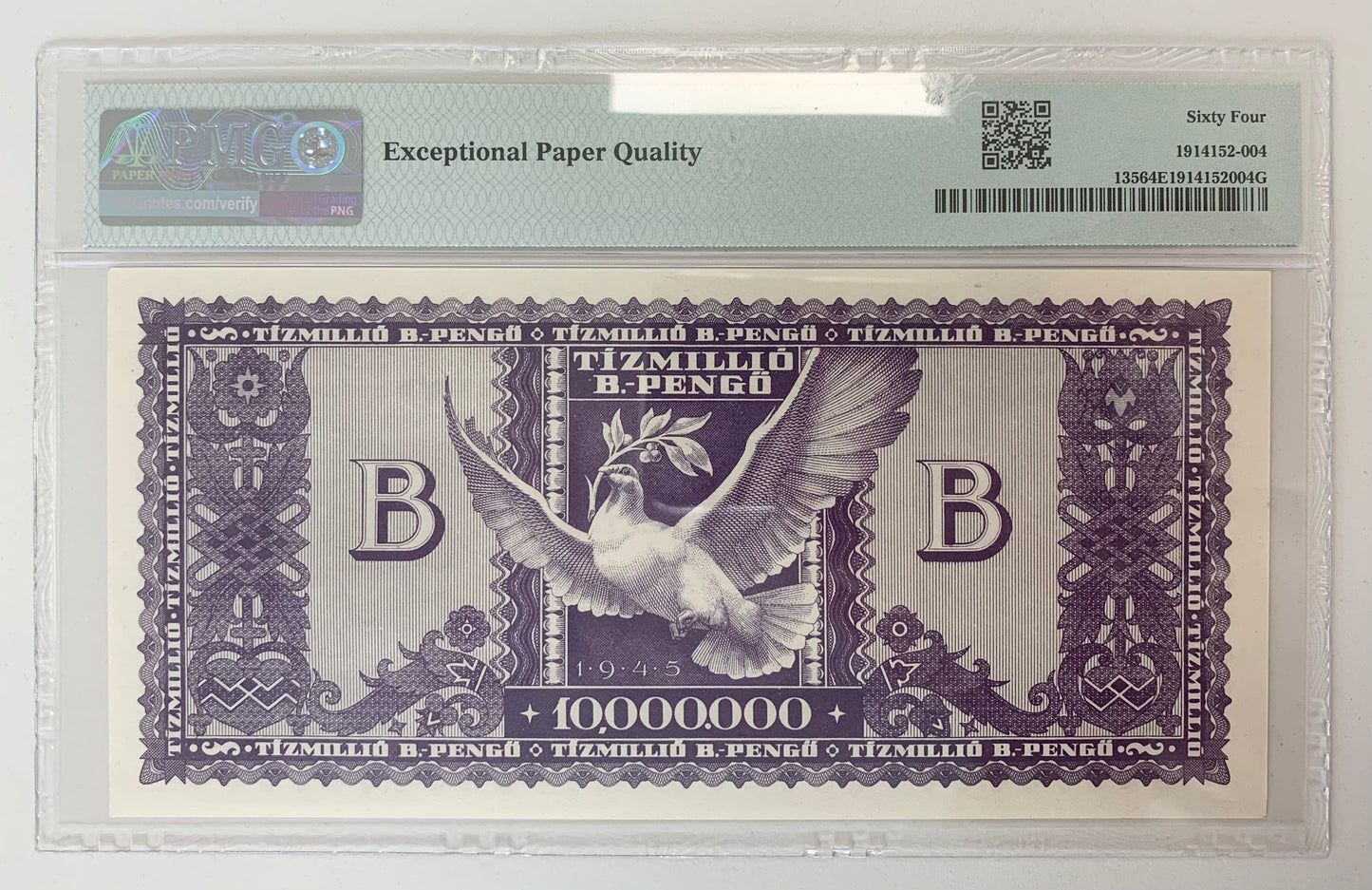Extreme Banknotes
Hungary 10 Millió B-Pengő 1946 UNC PMG 64 EPQ P-135
Hungary 10 Millió B-Pengő 1946 UNC PMG 64 EPQ P-135
Couldn't load pickup availability
Hungarian 10 million bpengo hyperinflationary banknote from 1946
The banknote is authenticated and graded by PMG, recieving 64 out of 70 points, meaning it is in Uncirculated condition, as well as having an EPQ (Exceptional Paper Quality) grading.
The denomination B.-Pengő meant one billion pengoes, i.e., 10^12, making this banknote worth ten quintillion Pengő. As it was difficult for the Hungarian population at the time to comprehend such colossal numbers, the National Bank had decided to place only the letter 'b' in front of 'Pengő', to make it easier to understand.
Since these hyper-inflationary banknotes were printed in ever greater variety in the cold and hungry months of 1945-1946, the population would usually only identify them by their colour, calling them 'the red', 'the pink', 'the purple', etc.
These banknotes had been in circulation only for a few weeks during the summer of 1946 after World War 2, and are very difficult to find in good, or uncirculated condition. They are also difficult to find unfolded, as these are larger than the previously used, non inflationary pengő banknotes. They did not fit into most wallets, thus were immediately folded upon receipt.
B-pengő print runs were limited in numbers. Estimated print-run of the 1 million B-pengő is between 1 and 1.4 million only. As a comparison, a modern $1 star note bill with a 4 million print-run is considered rare.
The reasons behind the short print-runs is the hyperinflation in Hungary after World War 2. New and larger denominations had to be created one after the other, and these higher and higher denominations added a significant liability to the balance sheet of the Hungarian National Bank.Size: 184x84mm
Share


CONDITION GUIDE
Gem Uncirculated
A note that is flawless, with the same freshness, crispness and bright color as when first printed. It
must be perfectly centered, with full margins, and free of any marks, blemishes or traces of handling.
About Uncirculated
A bright, crisp note that appears new but upon close examination shows a trace of very light use, such as a corner fold or faint crease. 'About Uncirculated' is a borderline condition, applied to a note which may not be quite uncirculated, but yet is obviously better than an average Extra Fine note. Such notes command a price only slightly below a new note and are highly desirable.
Extra Fine
A note that shows some faint evidence of circulation, although it will still be bright and retain nearly full crispness. It may have two or three minor folds or creases but no tears or stains and no discolorations.
Very Fine
A note that has been in circulation, but not actively or for long. It still retains some crispness and is still choice enough in its condition to be altogether desirable. It may show folds or creases, or some light smudges from the hands of a past generation. Sometimes, Very Fine notes are the best available in certain rare issues, and they should accordingly be cherished just as much as uncirculated notes.
Fine
A fine note shows evidence of much more circulation, has lost its crispness and very fine detail, and creases are more pronounced, although the note is still not seriously soiled or stained.
SHIPPING
Tracking information will be provided!
Your banknote will be packaged between two sturdy pieces of cardboard to safeguard its condition during transit, guaranteeing it arrives to you exactly as described. Should you have any inquiries, please don't hesitate to reach out - we're here to assist you!


